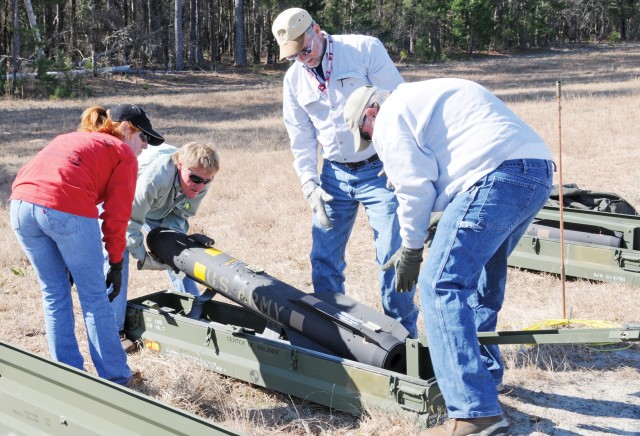FORT RUCKER, Ala. -- Several dozen AH-64D Apache and OH-58D Kiowa Warrior student-pilots gained hands-on experience regarding their aircraft weapons systems during a live-fire training exercise at Eglin Air Force Base, Fla., March 5.
Live Hellfire missile shoots aren't something every flight school student experiences before leaving Fort Rucker, said CW3 Matthew Welborn, Headquarters and Headquarters Company, 1st Battalion, 14th Aviation Regiment student management officer. Only about one quarter of Apache and Kiowa students make the trip to Eglin due to limited resources and weather constraints.
"It's valuable training because when they get to their unit, they've conducted live training exercises," said Maj. Rodel Pasibe, 1st Bn., 14th Avn. Regt. executive officer. "Our goal is to get high quality students to the field to support operations around the world."
Those fortunate enough to participate in the live exercises usually achieve required readiness levels faster than their peers.
In addition, post-flight school training time is reduced, Pasibe said. Students who don't participate in the live shoots must often wait until arriving at other units or during deployments to use the Hellfire systems.
However, students practice other helicopter weapons systems during flight school training here, he noted.
Leaders attempt to give student-pilots as much training as possible during their time here to eliminate inefficiencies and better prepare them for the warfight, helping fulfill Army Aviation's Big Opportunity plan, Pasibe said.
"We're streamlining (training) to meet the needs of the mission," he said.
Many students said last week's training met the goals.
"It gives us a little bit more experience. We see the impact of (the Hellfires) and how accurate they are," said Apache student-pilot WO1 Matthew Baden, B Company, 1st Battalion, 145th Aviation Regiment.
Fellow unit members WO1s Justin Rocha and Adam White said the training taught them the entire mission process - from planning to loading the missiles to firing them - and helped them understand the systems' complexities.
Firing live missiles is an adventure that can't be duplicated anywhere else, Rocha noted.
"It's one thing to do it on the simulators, but to see (how) it works gives you the confidence in the system," he said.
The training was even more special for WO1 Brandi Wyatt, a Kiowa student. Female student-pilots are already a minority, and since only every three to four classes conduct the live-fire training, Wyatt said she was one of very few women to complete the event.
For Apache pilot WO1 Brian King, getting the chance to make critical decisions and feel what the process is like made the training worthwhile. He said it gave him the necessary confidence for future missile encounters.
"For me, it took the doubt out of my mind (that) in combat I could get it downrange. It felt like a (real) mission," King said.




Social Sharing